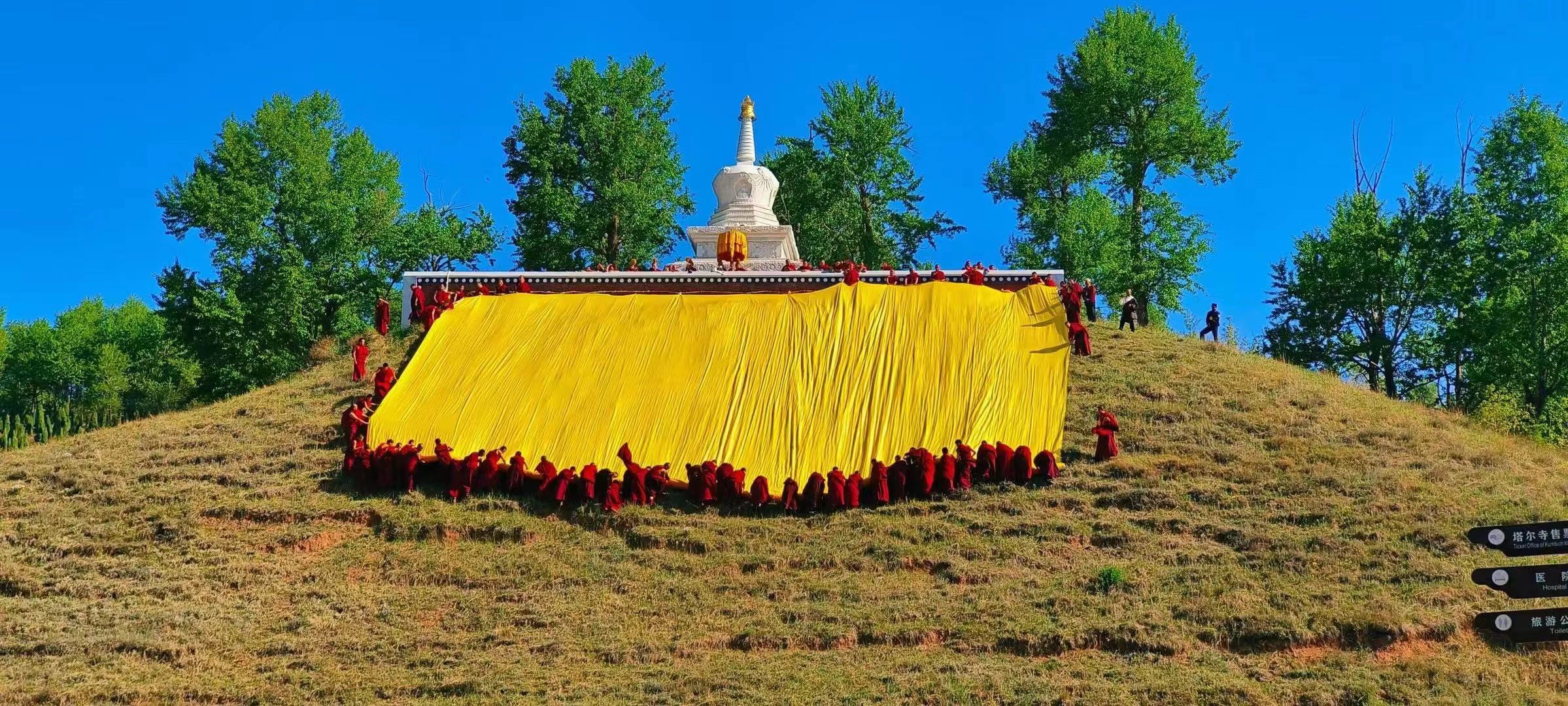In April, I went on a tour of Buddhist sites and temples along the Hexi Corridor. My last stop was an unambiguously Vajrayana space, set apart from the 99 per cent of other Buddhist institutions in Gansu Province. Known as Ta’er Temple in Chinese, this sacred place was built in 1583 and marks the birthplace of Gelug founder Je Tsongkhapa (c. 1357–1419).
Formally founded in 1612 on top of a 1379 pagoda built by the Hongwu Emperor of the Ming Dynasty (which in turn was constructed to celebrate Tsongkhapa’s legendary birth), Kumbum Monastery is located southwest of the main town of Xining. Xining is a city with many Tibetan residents (it was the first time I have seen a shopping mall filled with Vajrayana shops, selling Buddhist sculptures, ritual items, and gompa materials like shrines, altars, and even those awe-inspiring, elevated seats for teachers). Kumbum Monastery is acknowledged by the government as a national AAAAA tourist attraction: the highest possible.

Known in Gelug historiography as a reformer, “the Man from the Onion Valley” is mainly known for his synthesis of various core tenets of epistemology and Madhyamaka philosophy. But it was his founding of Ganden Monastery in 1409 that really cemented his institutional power. This monastery, along with the establishment of Drepung Monastery and Sera Monastery by his disciples, mark the true ascent of the Gelug school in Vajrayana Buddhism. It is arguable that his successors like Jamyang Chöjé (Tokden Jampel Gyatso) and Jamchen Chöjé did more to solidify Gelug influence than Tsongkhapa himself. Due to its heritage and role as the birthplace of Tsongkhapa, Kumbum Monastery is considered in China second in importance only to Drepung.
Kumbum Monastery is an important example of how the Vajrayana tradition flourishes in today’s China. It is, strikingly, a Gelug institution, but staffed by monks and teachers with spiritual authority and legitimate transmission while acting as conduit for Tibetan Buddhists operating in Gansu and beyond. A trusted source told me that the typical Tibetan pilgrim freely comes and goes to worship the sacred spots in this temple (Tibetans serving in the government need to be more discreet). The day I visited, the temple grounds were extremely crowded despite the poor weather: cloudy and grey, and with sporadic but severe showers. In contrast to my day tour in April, the skies of 6 June cleared up for Tsongkhapa’s commemoration, with a giant thangka of the Gelug founder unveiled by the great hill near the monastic complex.

There are various sacred landmarks at Kumbum Monastery, the most magnificent of which (in my opinion) is a gold-lettered collection of the Tibetan Kanjur and Tenjur. There is also the Dhammapala Hall (built 1692), the Grand Golden Tiled Hall (built 1379), and famously the Yak Butter Hall, where there are seasonal competitions for which is the most beautiful, intricate painted yak butter sculpture. But most heartening of all was the privilege of witnessing a great monastic debate, characteristic of all Vajrayana schools, in the courtyard with the full assembly of senior monastics and their juniors, who were undergoing examinations.
In both its material heritage and ongoing monastic activities, Kumbum Monastery embodies some of the traditional values of Vajrayana, from a preference for private teachings and a cautious attitude toward en masse empowerments to a rigorous monastic curriculum and adherence to the tantric principles of secret transmission and intense practice. It is a Dharma lighthouse for the Tibetan and broader Chinese community in Xining and Gansu, and it is no surprise that its reach and fame extends throughout the entire country, revered by every pilgrim that visits. I had an extraordinary experience there, but I suspect that many others would say the same.
Related videos from BDG
Along the Hexi Corridor: Grottoes of Longmen, Tiantishan, and Bingling Temple


